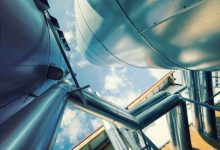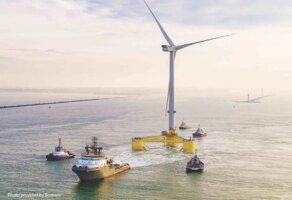Heaven knows, Australia’s clean energy leadership credentials have been trashed these past few years.
The OECD’s 2019 Environmental Performance Review published just last week ]is the latest independent study highlighting the abandonment of science and absence of strategy in national leadership on energy and climate in recent years.
Also trashed over the past 5 years is Australia’s previously proud record of innovative use of sensibly designed markets to achieve reform.
Who would have believed, 5 or even 2 years ago, that we would have a conservative federal government advocating the type of central-planning interventions in our energy markets – bordering on re-nationalisation – now being advocated?
Perhaps we should not be surprised, given the Coalition’s destruction, contrary to the Howard government’s well-founded research and policy, of any space for rational discussion of a market for carbon pricing.
With AEMO now thankfully under leadership willing to accept that energy system change is both inevitable and upon us, perhaps the pendulum can now begin to return towards the centre, where discussion can revert to how Australia can use market forces and mechanisms to achieve lowest cost transformation in our energy, transport and carbon markets.
As important as it is to get Australia’s clean energy transition right from now on, there is a much greater challenge immediately to our north, if the engine-room of global economic growth in the Asia-Pacific region is not to become the engine-room of irreversible carbon emissions growth.
If the world is to go close to achieving Paris emissions reduction targets, very soon Asia-Pacific energy policy-makers, in both the industrialised and the emerging economies, need to have options open up for genuinely industrial-scale carbon-free energy supply that can meet rapidly growing energy and transport infrastructure demand.
The very sobering assessments of the most recent IPCC Special Reportmake clear that there is no time to waste in addressing these challenges.
Right now, Asia-Pacific energy growth is following the 20thcentury model of corresponding carbon emission growth – emissions are heading entirely in the wrong direction. Indonesia’s skyrocketing emissions, while far from being unique, are a very serious example. In the absence of truly industrial-scale zero-carbon alternatives, emissions in Asia will inevitably continue to grow.
Something has to happen to break this pattern – and soon.
How might Australia begin both to restore faith among our regional trading partners and neighbours in the Asia-Pacific that we understand the energy and climate challenges they are facing, and show that we have the innovation and leadership capacity to work with them to mutual advantage to meet those challenges?
After a slow start, there is now an understanding that Australia’s immense renewable energy resources can be exported to meet the needs of our regional partners and neighbours. In some cases this may be achieved by high voltage transmission links, but geography will limit direct transmission as a solution.
An approach simultaneously more flexible and of much greater scale would be to replicate Australia’s natural gas industry and build supply chains for renewable hydrogen export – solar and wind energy, stored as hydrogen via electrolysis of water and shipped in bulk, just as gas and oil are today.
By converting renewable energy to bulk, transportable liquid form, the market scope is immediately broadened to the entire region.
The opportunity is for Australia to act now, jointly with regional partners, to accelerate this renewable hydrogen export industry. Digital bidding and transactional platform technologies are now availablecan enable an effective regional market for renewable energy – using renewable hydrogen as the means of storage, transportation and distribution.
It’s easy to see in graphical form how aggregating renewable hydrogen demand can be a far more powerful force to mobilise investment than individual national demand:
 Minimum levels of demand could set by each country in conjunction with industry, resulting in a firm minimum level of aggregated demand across the regional market, potentially supported by a clearing house function that provides confidence to investors, buyers and sellers that hydrogen produced will be paid for.
Minimum levels of demand could set by each country in conjunction with industry, resulting in a firm minimum level of aggregated demand across the regional market, potentially supported by a clearing house function that provides confidence to investors, buyers and sellers that hydrogen produced will be paid for.
Reverse auctions could be used to ensure least cost supply, and to encourage continuing technology and supply chain innovation.
A regional trading hub could look a little like this:
This could deliver immense export value and strategic influence for Australia in the Asia-Pacific region, while helping our regional neighbours to move more quickly than will otherwise be possible to adopt low-carbon energy and transport systems of the type envisaged in the ASEAN-Australia Strategic Partnership Plan of Action.
The importance of this market aggregation model is that it could enable renewable hydrogen unit costs to be dramatically reduced quickly. A digital Hydrogen Trading Hub model can aggregate demand scale across the region, providing the market scale needed for investors to commit to large-scale production, shipping and distribution infrastructure.
It’s no longer news that 70%-80% reductions in solar energy cost, similar falls in wind power cost, and battery cost reductions that are heading in the same direction, mean that renewable energy now outprices fossil fuels in most places across the globe.
Of course there has been ongoing technology improvement, but it is economies of scale that have delivered the most dramatic cost reductions. Supply scale reduces cost, demand scale under-pins supply scale, technology improvement accelerates both. It’s a cycle of positive reinforcement. Solar PV is the most obvious example.
Market and cost dynamics portend industrial-scale uptake across the Asia-Pacific of solar, wind and energy storage, strengthening regional energy security, energy equity (access for more people to reliable power), and energy self-sufficiency. But there is a gap.
Limited solar and wind resources and land availability, along with population density, present physical barriers to renewable energy self-sufficiency in most of the countries in the region. Australia is the notable exception.
While ASEAN is expanding transmission inter-connectivity, the physical limits apply for ASEAN cumulatively too. Inter-connectivity in north Asia (Japan, Korea and Taiwan) is highly challenging both geographically and strategically.
For much of the region, the reality is that clean energy imports will be needed at large scale to complement and supplement indigenous renewable energy production, transmission and storage.
This means that there is going to be a market – a very large one – across the Asia-Pacific region for renewable energy stored and shipped in bulk, liquid, transportable form, just as diesel, gasoline and natural gas are today.
Renewable hydrogen fills this gap.
The technologies enabling this are available commercially today. As with trains, planes, cars, solar cells and wind turbines, they will continue to improve, becoming cheaper and more efficient, reducing costs. But already decades of R&D investment, particularly in Japan, Korea and Europe, have delivered hydrogen technologies ready for infrastructure-scale deployment now.
What is holding this back? As I was asked by a senior Canberra bureaucrat recently, ‘If hydrogen is so good, why hasn’t it just taken off?’
The answer is – economies of scale. Or, rather, the fact that renewable hydrogen supply chains are not yet at industrial scale.
Look what happened as soon as solar achieved industrial scale. Look what’s happened with wind. Look at what is now happening with batteries.
For that matter, look at what happened with gasoline at the end of the 19thcentury. Sure, incumbent horse and buggy was cheaper at the time, but by the 1920’s scale production of gasoline and internal combustion engines had relegated horse and buggy to the past.
And it’s worth remembering that solar PV really only exploded as a commodity after market-based mechanisms were implemented to accelerate solar PV deployment – pioneered by Germany and embraced by Australia and others.
It was China, and to a lesser extent Korea, that recognized and moved to exploit the scale benefits underpinned by that demand; the resulting cost benefits are flowing through globally, but China now has the strategic advantage. The technology was sound, but it needed structured market demand support to get it to the scale needed to compete with incumbent energy.
All that’s needed for renewable hydrogen to reduce unit cost is scale. To achieve supply scale, there must be confidence in demand. So the solution to hydrogen ‘taking off’, is to collaborate across the region to aggregate and firm up the potential regional demand, so giving investors and policy-makers the confidence they need to plan investment accordingly.
Investors and governments at the moment are cautiousabout the rate at which clean hydrogen demand will grow; there is a general consensus internationally that hydrogen will be an important part of the clean energy future, but at the moment demand is dependent, almost entirely, on individual government programs – most notably for our region, Japan’s.
One way for Australia and the region to approach this uncertainty is to wait and let things evolve, but it’s hard to see how that would be to anyone’s benefit, least of all Australia’s. As Alan Finkel recently noted, there is already budding competition from Norway, Brunei and others. ‘This is the time for Australia to stake its claim as (hydrogen) supplier of choice.’
The very sobering conclusions of the most recent IPCC Update Reportare telling us that there is precious little ‘wait and see’ time left. If the world is to arrest climate change, there has to be a very near-term reversal of the continuing trend of carbon emission growth. If that is to happen, the reality is that new economic growth, the bulk of which the data shows will come in Asia, must be zero-carbon.
Japan (December 2017) and South Korea (January 2019) have each published updated hydrogen industry templates, in each case building on decades of policy and investment in technology, research and industry. No-one can doubt the serious national intent of both countries to build economies based around clean hydrogen and to reduce (eventually to eliminate) fossil fuels and nuclear power.
Here is the opportunity for Australia.
We have the clean energy, our Asian neighbours and trading partners need it. Viewed in aggregate across the region, immense economies of scale are achievable with just a little coordination. Is Australia willing to step up and lead discussion for that type of coordination?
The great success of the reform that was the National Electricity Market was its aggregation of demand for electricity across the participating NEM States.
This established the basis for infrastructure investment to be planned at greater economic scale. Although the NEM has suffered from poor strategic planning and regulatory evolution since, the scale benefits achieved through collaboration of the NEM States and the Commonwealth were real.
As the world’s economic centre shifts to the Asia-Pacific, regional populations grow and regional industry expands, countries like Indonesia need to make decisions about energy security and transport infrastructure.
Japan, South Korea and Taiwan are deep in consideration about how to re-engineer energy and transport systems in a low-carbon world, and how to achieve decarbonization and de-nuclearisation while protecting and growing industrial capacity.
Energy export-import markets are commodity markets. Economic cost in commodity markets cannot be achieved until economies of scale can be achieved. This was true of oil in its early days and is equally true of renewable hydrogen.
The faster renewable hydrogen achieves scale, the faster hydrogen unit cost reductions will be delivered. Lower unit cost will in turn accelerate demand growth, and demand growth will generate further infrastructure investment, delivering further cost reductions.
Australia stands to be one of the major beneficiaries – perhaps the major beneficiary – of regional collaboration to accelerate clean hydrogen adoption in energy and transport. There is an opportunity, of major economic and strategic importance for Australia, to lead efforts for collaboration to establish an Asia-Pacific regional Hydrogen Hub to bring this forward.
This might just restore regional confidence that we are indeed interested and capable – even if motivated by self-interest – to work with our neighbours and major trading partners to achieve regional energy security, decarbonization and economic development goals.
Andrew Want has been involved in sustainability and environmental markets for over 25 years and has a Master of Laws in these fields. Since 2008 he has been extensively involved in the solar industry and, since 2013, has been a leading advocate for the development of an Australian clean energy export industry via renewable hydrogen. He was formerly CEO of ASX listed and multi-national financial services companies in Australasia, Japan and ASEAN, a senior lawyer, company director, and chairman of Australian and international not-for-profit bodies in eye heath and solar.











